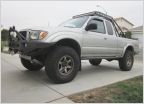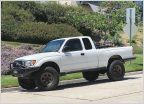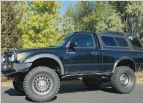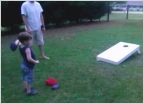-
Welcome to Tacoma World!
You are currently viewing as a guest! To get full-access, you need to register for a FREE account.
As a registered member, you’ll be able to:- Participate in all Tacoma discussion topics
- Communicate privately with other Tacoma owners from around the world
- Post your own photos in our Members Gallery
- Access all special features of the site
AdventureTaco - turbodb's build and adventures
Discussion in '1st Gen. Builds (1995-2004)' started by turbodb, Apr 4, 2017.
Page 157 of 281
Page 157 of 281


 My 02 SR5 4WD Build - "T. Belle"
My 02 SR5 4WD Build - "T. Belle" Synergy10's 02 Extra Cab Build
Synergy10's 02 Extra Cab Build The Expo Golf Cart
The Expo Golf Cart W00dy's 2003 DoubleCab aka The driveway queen
W00dy's 2003 DoubleCab aka The driveway queen Djm228's maintenance thread
Djm228's maintenance thread






































